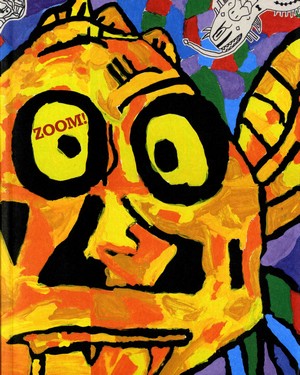Museo delle Culture uses cookies to improve the user experience. If you need more information click on the privacy page. Privacy policy X
22 April 2010 - 13 June 2010, Heleneum - Lugano
The fifth appointment of the Dèibambini exhibition cycle explores the ways in which a child's world describes how objects can change size and proportions. In other words, ‘miniaturization’ and 'megalization’ are the strategies adopted by every culture in order to understand and control the world. This is a rather elaborated concept that can be approached from an anthropological point of view to develop an educational and artistic project. The project investigates the different meanings and values of the aforementioned theme. It also studies the various contexts in which they appear: from ritual sculptures to toys, from architecture to literature, from souvenirs to pieces of art.
Children from three primary school classes (Probello and Lambertenghi) and two preschools (Barbengo and Gemmo) in Lugano worked on this project during six months. Guided by their teachers and didactical experts, they explored the concepts and meanings of ‘miniaturization’ and ‘megalization’ through a series of guided museum tours and class activities.The aforementioned topics were unwittingly very close to the children’s relationship with ‘small’ and ‘large’, which is a pragmatic part of their everyday life. School desks, clothes, the furniture in their rooms and also their classmates are constant ‘miniatures’ in their eyes.
Children feel comfortable in the miniature world of their toys and virtual universes and can move with greater ease and freedom than in an adults’ world. In addition to the objects which children extensively know and use (globes, souvenirs, soft toys), their first source of inspiration were the museum's ethnic artworks, such as the huge ceremonial wagon (ratha) used in India to carry the sculptures of the Gods in a procession, the small sculptures representing ancestors and the huge gable mask of the River Sepik region (New Guinea), the large representations of yam spirits from the hills of Maprik (New Guinea), and many other examples that were discussed and reproduced in detail by the children. They immediately felt at ease and responded with interest and delight to our suggestions. At the end of the educational journey, the preschool children created a huge collective artwork of coloured rain, which was falling onto an Uli (the propitiator spirit of weather phenomena once revered by cultures of New Ireland). The children had been fascinated by the Uli during their museum tours and enjoyed reproducing the spirit while magnifying its size. The three primary school classes created three collective ‘megalized’ paintings, which allowed them to understand the importance of openness, collaboration and mutual support, encouraged by the need to build something ‘great’. They also produced an individual artwork that consisted of a miniaturepainting. This encouraged them to give free rein to their imagination. However, they were then faced with the task of reproducing a very limited part of this imagination on a small cardboard square (10 x 10 cm.) The exhibition displayed the children's artworks, a series of contextualizing images that demonstrated their educational journey, a a number of significant museum pieces.
The exhibition layout was designed Giulio Zaccarelli, in collaboration with Isabella Lenzo Massei (exhibition curator) and Silvia Paradela (head of the artistic project). The exhibition catalogue was edited by the City of Lugano. It presents pictures of the young artists' creations and their own comments, as well as essays by Giancarlo Bernasconi, Francesco Paolo Campione, Isabella Lenzo Massei, Adriana Mazza, Silvia Paradela and Giulio Zaccarelli. It also includes a dossier for an in-depth examination of the museum’s artworks by Barbara Gianinazzi.
